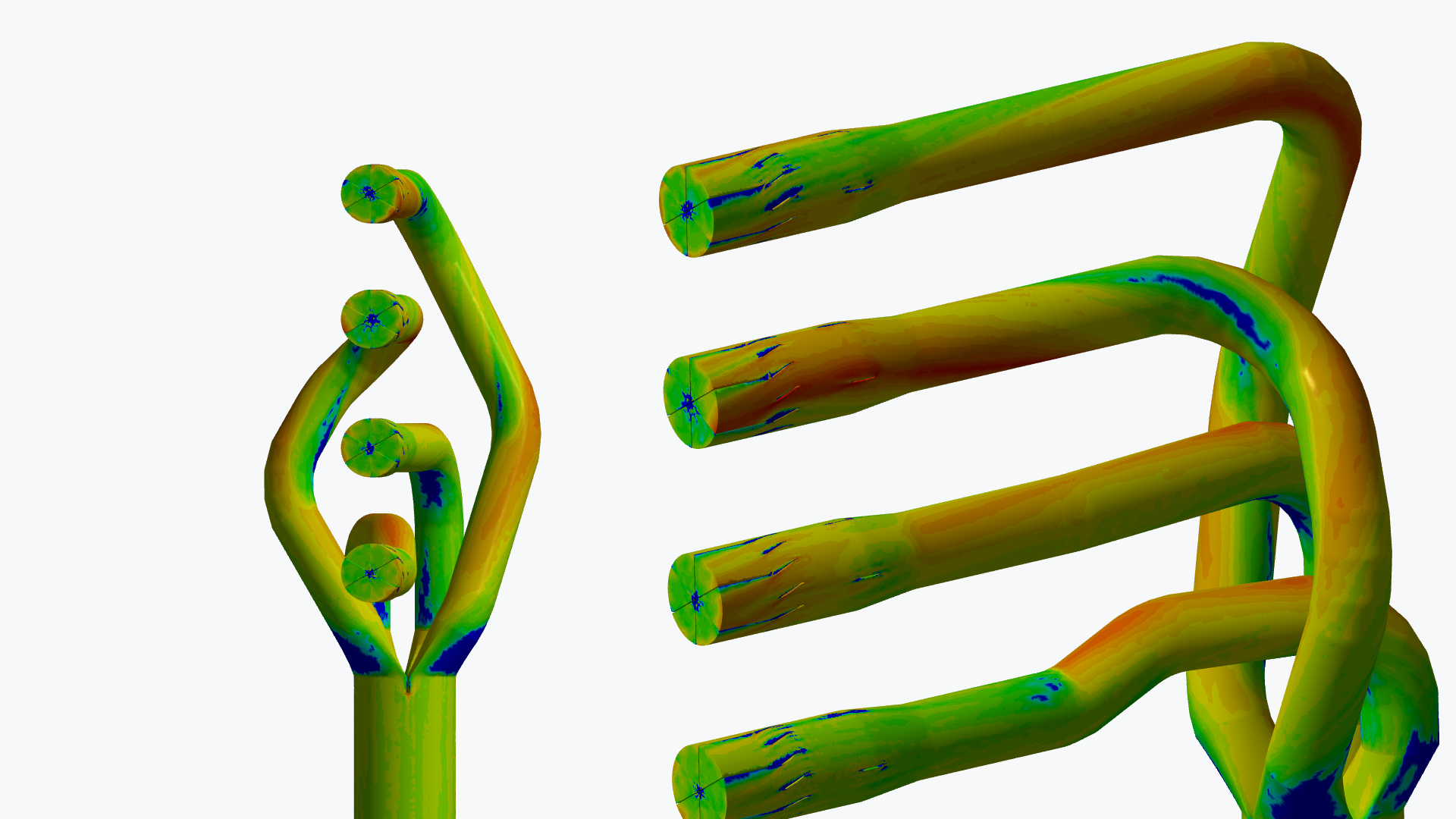CFD Analyses
CFD analyses, including - in particular - flow, heat transfer, and chemical reactions, are becoming the tool, which can improve both parameters of the equipment, and proper understanding of its function.

The combination of numerical methods, classical analytical calculations, and experiments is very effective, and in many cases also indispensable. In certain cases, these calculation methods can reduce the frequency of experiments or can even substitute such experiments for cases where an experiment or measurement is problematic or impossible.
CFD analysis includes, in particular, the following steps (some of them repeatedly)
- establishment of the geometry of the calculation domain
- grid establishment
- selection of modeled physical and chemical processes
- definition of operating media and their properties
- specification of boundary conditions
- solver setup
- calculation
- visualization of results and their assessment
Our numerical studies focus, in particular, on the following aspects
- single-phase flow in ducts
- flue gas ducts and their components (bends with internals, flow distribution, etc.)
- air ducts and their components (bends with internals, flow distribution, etc..)
- two-phase flow gas - pulverized coal in the milling circuit
- flow in pulverized coal ducts
- mixing of air volumes
- processes in the combustion chamber of pulverized coal-fired boilers
- other applications
Furthermore, an active role of the customer from the point of delivery of relevant data to assign geometry of the calculation domain (drawing documentation), specification of boundary conditions such as temperatures, pressures, flows (measurement data), operating media (composition of gases, pulverized coal quality), etc. is also essential to prepare CFD analysis of the existing equipment. All too often, delivered data are not consistent, either based on the fact that gauges have not been calibrated or have been installed at an inappropriate point, or not all quantities have been measured at one time. The quality and quantity of measured operating values significantly influence the quality of results.

